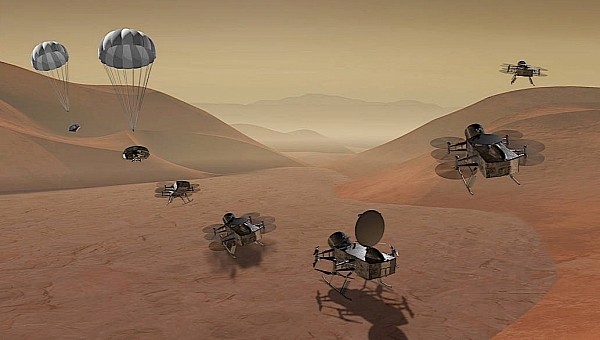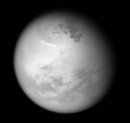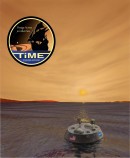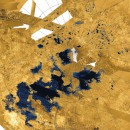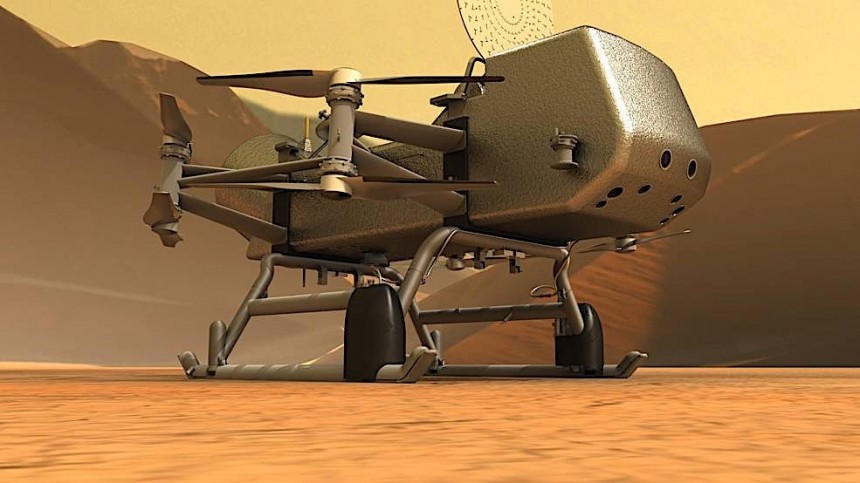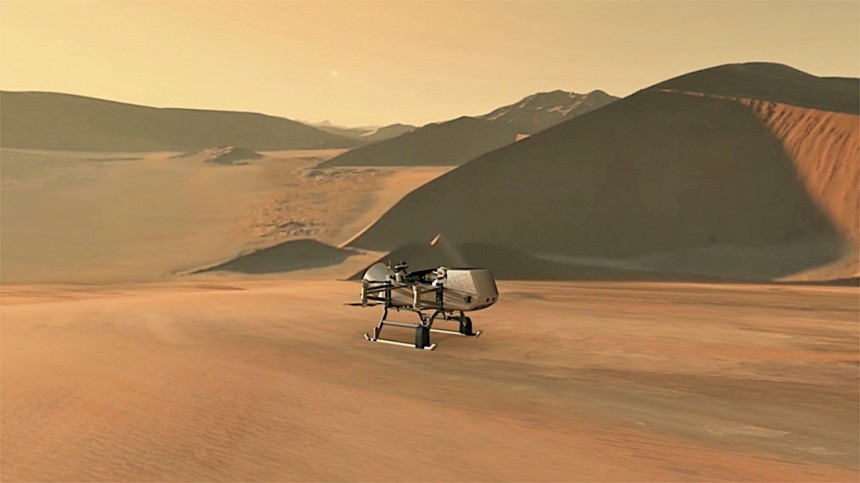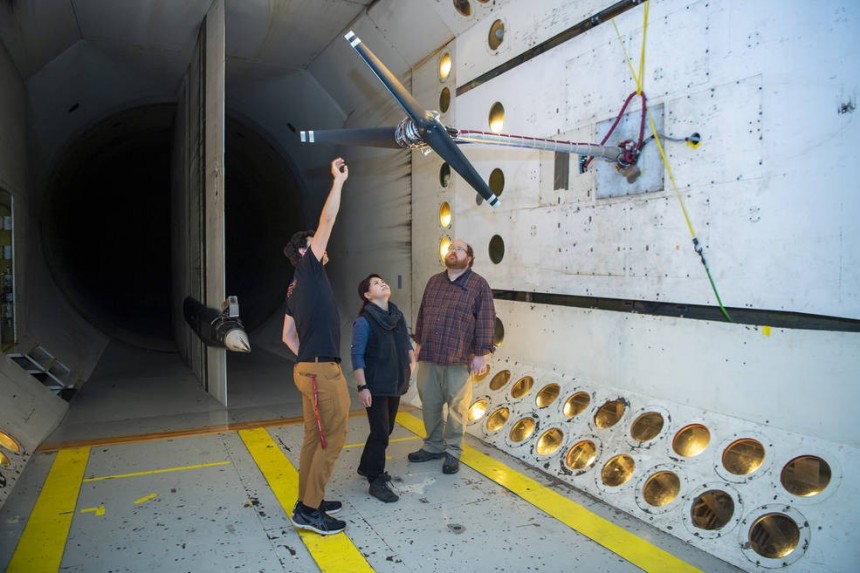The last time we looked at a proposed space probe designed to explore the surface of Titan, it was a one-of-a-kind machine, designed to float over a sea of liquid methane that dwarf all but the biggest of Earth's H2O seas.
Titan MARE sadly never made it off the drawing board. But another idea likely will. We've had our sights on NASA's Dragonfly since its announcement in 2019, but let's take a deep dive into the nuts and bolts. Say hello to the remarkable attempt to place only the second-ever powered, heavier-than-air rotorcraft on the surface of another heavenly body.
Unlike NASA's Ingenuity probe whizzing across Mars at the moment, Dragonfly's design packs some serious weight. Developed by NASA-affiliated Johns Hopkins Applied Physics Laboratory engineers, Dragonfly is set to make Ingenuity look like a child's toy.
But why Titan? What about this frigid ball of slushy methane and rock is so fascinating that NASA's willing to send its most advanced UAV, not to Mars, Venus, or the Jovian moons, but to Titan instead? Well, it's got a lot to do with an atmosphere so thick that, like Venus, it masks the surface under an atmospheric soup of methane, nitrogen, and hydrogen. While lacking all but the most insignificant traces of oxygen.
This means if someone were to try and light a cigarette while on the surface of Titan, the planet wouldn't immediately explode like a gas station pump that's just been hit by a speeding truck. An atmosphere reported to harbor multiple different hydrocarbon compounds acts as a shrowd for what lies beneath.
The only planet-like surface in our Solar System to harbor lakes, rivers, and even small oceans of surface-level flowing liquid. Not of traditional H2O, mind you. Instead, temperatures are so unbelievably cold that even stable gasses here on Earth, like methane, start to condense into a liquid that resembles 0W-20 motor oil to the human eye than it does Earth's liquid water.
But mixed in among the liquid methane, trace hydrocarbon compounds, and all is a solution of super chilled liquid water mixed with copious amounts of ammonia. Ammonia is potentially lethal on Earth when mixed with chemicals like chlorine bleach. But scientists believe in other contexts, ammonia might actually be a good catalyst for organic compounds latent inside Titan to create conditions for living beings to evolve.
As an added layer of gravy on top, this dense Titanian atmosphere is also perfect for the propellers of an aircraft to cling to as they pull themselves along the surface of an utterly alien landscape. Does it make sense why Dragonfly isn't going to Mars now?
But in any case, a planned mass of 450 kg (990 lbs) and powered by a small 70-watt nuclear fission reactor puts Dragonfly on par with the current generation of NASA's Mars rovers like Curiosity and Perseverance. Current computer designs call for a chassis consisting of a composite metal frame over which a metal body consists of the same space-age materials.
Inside this sarcophagus-looking metal body will sit a suite of sensors, instruments, and scientific analysis equipment meant to study every aspect of the Titanian surface that modern science can currently survey. Underneath the scientific instruments, bay sits a landing skid system seemingly fashioned out of an old rally car's roll cage.
A series of eight twin-blate rotors will jump out from the central probe structure. By chopping through the air in the same manner as on Earth, the nuclear generator should generate enough lift to let Dragonfly take to the skies. Flying point to point across the Saturnian moon, Dragonfly will make use of its lift rotors and its dual sampling drills mounted on the probe's undercarriage.
With a mission of this caliber, no portion of the Titanian surface isn't ripe for exploration. From lakes of liquid methane the size of Lake Superior and the Caspian Sea to pools of ammonia-water solution potentially teeming with hydrocarbons and organic compounds. It's hard to judge where the limits of Dragonfly's potential peak are until it's already launched and on the Titanian surface.
That's without taking into account any number of potential scientific goodies found on Titan's solid surface. By boring directly into Titanian regolith, we may discover just as many scientific goodies on land as we do in the ocean. Then again, we're a fair bit away still from this taking place.
For starters, the booster rocket that will take Dragonfly to the Saturnian System is still yet to be decided. Be it a Falcon Heavy, the Delta IV Heavy, or even an SLS Block I-based cargo variant. NASA is indeed spoiled for choice. But they'll have to make up their minds soon, as the launch window beginning in June 2027 will be here before you know it. With testing for Dragonfly's novel octocopter rotors already underway, we're all pulling for NASA to chalk up another W.
If all goes to plan, expect Dragonfly to be roving the surface of Titan by 2034 for a science phase planned at no more than 3.3 years. Check back soon for the last licks from Celebration Month 2022 here on autoevolution.
Unlike NASA's Ingenuity probe whizzing across Mars at the moment, Dragonfly's design packs some serious weight. Developed by NASA-affiliated Johns Hopkins Applied Physics Laboratory engineers, Dragonfly is set to make Ingenuity look like a child's toy.
But why Titan? What about this frigid ball of slushy methane and rock is so fascinating that NASA's willing to send its most advanced UAV, not to Mars, Venus, or the Jovian moons, but to Titan instead? Well, it's got a lot to do with an atmosphere so thick that, like Venus, it masks the surface under an atmospheric soup of methane, nitrogen, and hydrogen. While lacking all but the most insignificant traces of oxygen.
This means if someone were to try and light a cigarette while on the surface of Titan, the planet wouldn't immediately explode like a gas station pump that's just been hit by a speeding truck. An atmosphere reported to harbor multiple different hydrocarbon compounds acts as a shrowd for what lies beneath.
But mixed in among the liquid methane, trace hydrocarbon compounds, and all is a solution of super chilled liquid water mixed with copious amounts of ammonia. Ammonia is potentially lethal on Earth when mixed with chemicals like chlorine bleach. But scientists believe in other contexts, ammonia might actually be a good catalyst for organic compounds latent inside Titan to create conditions for living beings to evolve.
As an added layer of gravy on top, this dense Titanian atmosphere is also perfect for the propellers of an aircraft to cling to as they pull themselves along the surface of an utterly alien landscape. Does it make sense why Dragonfly isn't going to Mars now?
But in any case, a planned mass of 450 kg (990 lbs) and powered by a small 70-watt nuclear fission reactor puts Dragonfly on par with the current generation of NASA's Mars rovers like Curiosity and Perseverance. Current computer designs call for a chassis consisting of a composite metal frame over which a metal body consists of the same space-age materials.
A series of eight twin-blate rotors will jump out from the central probe structure. By chopping through the air in the same manner as on Earth, the nuclear generator should generate enough lift to let Dragonfly take to the skies. Flying point to point across the Saturnian moon, Dragonfly will make use of its lift rotors and its dual sampling drills mounted on the probe's undercarriage.
With a mission of this caliber, no portion of the Titanian surface isn't ripe for exploration. From lakes of liquid methane the size of Lake Superior and the Caspian Sea to pools of ammonia-water solution potentially teeming with hydrocarbons and organic compounds. It's hard to judge where the limits of Dragonfly's potential peak are until it's already launched and on the Titanian surface.
That's without taking into account any number of potential scientific goodies found on Titan's solid surface. By boring directly into Titanian regolith, we may discover just as many scientific goodies on land as we do in the ocean. Then again, we're a fair bit away still from this taking place.
If all goes to plan, expect Dragonfly to be roving the surface of Titan by 2034 for a science phase planned at no more than 3.3 years. Check back soon for the last licks from Celebration Month 2022 here on autoevolution.
